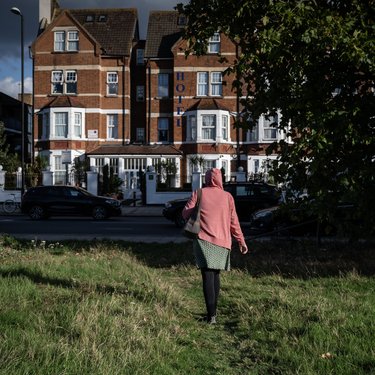Temporary accommodation types in London (2002-2025 Q2)
Last updated: November 2025
Next estimated update: January 2025
What does this indicator show?
When someone becomes homeless, their local authority has a legal duty to provide them with accommodation. While they are waiting for a permanent solution - such as a home provided by a housing association - local authorities must house them in temporary accommodation. This can be many types of accommodation - such as nightly accommodation, the private rented sector or a bed and breakfast.
This indicator shows the number of households placed in temporary accommodation by year, and the type of accommodation used. You can also use it to see how many households were placed in temporary accommodation in another local authority district, and how many had a duty owed, but for which their local authority were unable to find any accommodation.
What does it tell us?
Temporary accommodation at highest levels on record
In the second quarter of 2025, 75,000 households in London were in temporary accommodation. The latest full year’s worth of data for 2024 saw the highest level since our earliest comparable data point in 2002.
The number has been steadily increasing since 2011, but accelerated between 2023 and 2024, with the number of London households in temporary accommodation increasing by 13% in just one year.
Types of temporary accommodation
The most prevalent form of temporary accommodation is now nightly paid accommodation (averaging 33,910 in 2025 Q2), which has grown rapidly since 2012 and has now overtaken the private rented sector (18,060 in 2025 Q2) which had been the most common type of accommodation throughout most of the time period.
Placements in a different borough
Temporary accommodation placements in different local authorities than the one households were made homeless in, have increased substantially since 2010, when the lowest number was recorded (5,275 households).
In 2024, the number of households placed in temporary accommodation in a different local authority was 31,040 - almost 7,000 more than one year earlier and almost six times as many as in 2010. In the second quarter of 2025 this figure was 34,280 households.
We explore the temporary accommodation crisis in more detail in our blog.
Notes
These values represent an average of 4 quarters for each full year (2002-2024), apart from for the first two quarters of 2025.
It is difficult to estimate the effect of public health measures during the COVID-19 pandemic on temporary accommodation figures. Local authorities received additional funding in order to be able to house people sleeping rough and were given powers to accommodate those who might not normally be entitled to help due to their immigration status. In addition, the eligibility for priority need was expanded during the pandemic to include people with underlying health conditions that made them more vulnerable to adverse effects from a COVID-19 infection.
